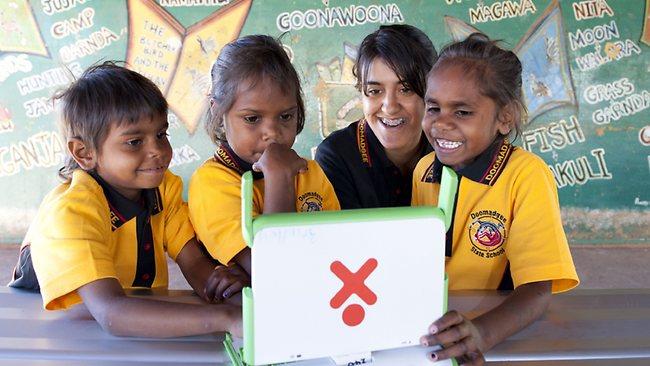Long road to equal education
TIMES have changed in the way indigenous students are taught.

ONE of the great things about the internet is that it has made available to the public a lot of really important and interesting documents.
One of the most interesting is the 1893 Fred Hardie photograph taken of the Reverend Ernest Gribble at Yarrabah, a large Aboriginal community south of Cairns in north Queensland.
Before beginning my discussion of the photograph, it is necessary for me to acknowledge that with indigenous mourning practice, it has been customary to avoid photographs of dead relatives. Showing them can cause pain and offence. However, my focus is primarily on Gribble and what the photograph can teach us about the sort of education we used to provide to indigenous children.
There are some unusual features to the photograph itself. The visual aid, the teacher (a Mr Pearson) and the blackboard have been arranged so that they face the camera rather than the class. The other white man in the photograph, standing on the left, is ER Gribble, who had been appointed superintendent of the Yarrabah Industrial School established for the "detention of Aboriginal and half-caste children".
The Industrial Schools had been set up following the Industrial and Reformatory Schools Act of 1865. The act effectively criminalised Aboriginality.
Gribble is a controversial figure. His approach to indigenous education was designed to "Europeanise the native". In her biography of Gribble, A Terribly Wild Man, Christine Halse reports that he was determined to "break though the wall of senseless customs and traditions of the dark skinned and the dark minded".
The chief protector of Aborigines, Dr Roth, commented favourably on Gribble's "peripatetic method", where he visited Aboriginal camps and "picked up many a little waif and stray and, with the consent of the parents, brings them into Yarrabah".
The reality is of children being forcibly removed and locked into dormitories. English was the only language of instruction and all links with the children's culture were deliberately broken.
The children slept on concrete floors and were subject to harsh discipline. Schooling was for a mere two hours a day and was secondary to the demands for manual labour on the plantations. The standard of education was very basic; Gribble commented on his educational aims in this way:
"We do not aim at anything elaborate in the way of education, unless it be with a few promising pupils who may become useful as teachers later on.
"As soon as a fair standard is reached, the scholars give the whole, instead of a part of their time, to the general work of the settlement."
Roth, a strong supporter of Gribble, commented on the aims of schooling at Yarrabah:
"I am pleased to report that the standard of education attempted is purposely not a high one, more value being set on the entailed habits of discipline, obedience, and routine."
It is also important to note that Gribble himself acquired his theological qualifications in an unorthodox if not downright nepotistic manner, and neither he nor most of his staff had educational qualifications.
In the photograph, Gribble stands with his arm around one of the children who has been made to stand up for the purpose of the photograph. The children, boys and girls, are wearing the kind of calico bibs that were used with people who traditionally did not wear clothes or who suffered from a disability. Should the clothing exhibited here be described as school uniform? Was it given? Or was it loaned?
The reading material on the visual aid in Gribble's classroom also merits a comment. It is organised around the principles of phonics. We read and discover "Ned has a big bell in his hand". The gap between this sentence and the interests and needs of the children seems truly unbridgeable.
Not until 1925 was Clement Fox, inspector of schools, asked to produce "a suitable elementary reading book" for use with indigenous children.
Looking at the phonics chart and the glum faces of the children, I am struck by how there is a missing "ell" word: it is HELL, and the indigenous kids are in it.
Some things take a long time to die; Yarrabah State School is today located on Gribble Street.
If we turn from the Yarrabah photograph to that of the children at Doomadgee SS, we see children clustered round their teacher looking at a story on a laptop. Teacher and students are all engaged at a very equal level.
The latest technology has been made available to the Doomadgee children and it takes them outside the bounds of both the classroom and the control and power of the teacher.
But it is not in technology that the major difference between the photographs lies. What distinguishes the photographs is that the children now are at the centre. They are happy, while the children of Yarrabah were so clearly sunk into the depression inflicted on them by the wars and symbolic violence of the frontier.
We have still a long way to go in indigenous education, but we have made progress and these photographs show it.


